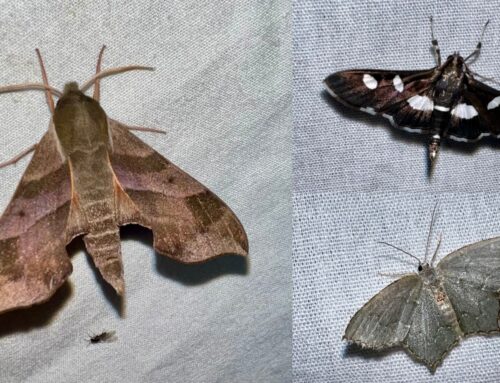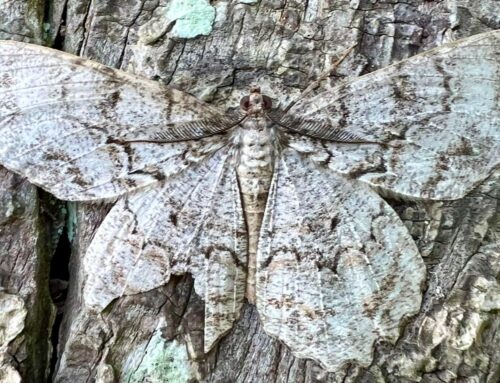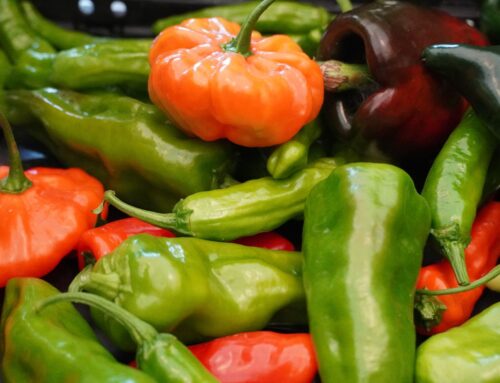How do you live in paradise? Does this paradise have insects as friends and tenants? We are featuring gardens created by Tyler staff and volunteers. Our gardeners are regular folks with a love of the natural world. Some have vegetable gardens while others have wooded lots. This is their Pollinator Paradise.
Photos 1 to 2 — Garden of John B.
John B. writes, “This is our first year pollinator garden. It is completely redesigned from what existed here last year. Before this was possible, there was a large blue spruce that was dying from Rhizosphaera or needle cast. After removing the spruce, this became one of the only areas in our yard that got full sun.
We always wanted a pollinator garden to go with our vegetable patch. This is a first year garden started just this spring. Many of the pollinator attracting flowers are native such as the cone flowers that are currently putting on a wonderful display. It is located in Middletown Township, Delaware county, not far from Tyler itself which is where we drew much of our inspiration! Many honey bees and butterflies visit daily.
The vegetable patch currently has five varieties of tomatoes, two varieties of peppers and nasturtium.
In the fall I will be planting beets, carrots and our favorite , lots of arugula. We visit the garden daily and enjoy its beauty.”
Photos 3 to 5 Garden of Julia E.
Created in 2019 with mostly perennial plugs and plants from the front garden, the pollinator garden is full of insects for most of the growing season (April to end of October). Julia wanted it to have texture, movement and plants that would thrive in the hot sun with little care. She has accomplished that. In this garden are rattlesnake master (Eryngium yuccifolium), Raydon’s Favorite asters (Symphyotrichum oblongifolius ‘Raydon’s Favorite’), anise hyssop (Agastache rupestre), blue star (Amsonia hubrichtii), milkweed (Asclepias tuberosa), culinary sage (Salvia offinalis), blazing star (Liatris spicata) and small headed blazing star (L. microcephala) to name a few. It is located at the entrance to the vegetable garden where it attracts pollinators. Julia walks by it every day and looks for “changes.”
Photos 6 to 9, Garden of Jane and Bob F.
Jane and Bob F. moved to their current home in 1993 because they would be surrounded by woods as well as a stream that borders their property. Between 1993 and now, both Jane and Bob retired and found themselves in paradise after many years of gardening. They dug up an old black top asphalt area, planted trees they purchased at the Tyler Plant Sale, sought advice from professionals and tried different things. They concentrated on mostly native plants for their ability to survive in wet conditions as they had many seeps and wet spots. Today, a grove of pawpaws provide ample food for the Ferry’s and the wildlife; a seep garden full of summer sweet (Clethera alnifolia), button bush (Cephalanthes occidentalis) and lizard tail (Saururus cernuus); a pond garden teaming with life and a foundation planting that most of us only dream of. You can find both Jane and Bob working side by side in the garden supervised by their cat (who acts like a dog) Chase.
Photos 10 to 13 Garden of Heather G.
Heather G. moved in to this home in 2008 and she did not in earnest begin native plant gardening until 2013 when she joined the Penn State Master Gardeners. Heather was reminded of the key role of garden plants in supporting wildlife. Today, her half-acre garden has sunny areas flanked by the woods. Here insects and birds find food and safe haven amongst the asters, phlox and hydrangeas as well as in numerous trees including small wild cherries, red and willow oaks. Heather’s paradise is about supporting our treasured wildlife and key native habitats. Her property is a Certified Pennsylvania Pollinator Garden by the Penn State Master Gardeners and is a Certified Wildlife Habitat through the National Wildlife Federation.
Photos 14 to 19 Garden of Nancy H.
Nancy writes, “This garden is situated along the sidewalk as we enter our home and was planted 10 years ago with a variety of plants for pollinators and host plants for monarchs and black swallowtails. July brings the most pollinator and insect activity once the Asclepias syriaca, Phlox paniculata, Echinacea purpurea, Liatris spicata, Agastache and many others begin to flower. Bronze fennel is included as a host plant for the black swallowtail butterfly. The magnified photo of the flowering echinacea allows one to observe how tiny the flowers are on this prolific producer of nectar. Watching and learning about the insects that visit or make their home here is fascinating. Needless to say, it often takes me fifteen minutes or more to walk twenty feet to my door.”
Photos 20 to 23, Garden of Bess T.
Bess T. writes “When I moved it to my house in 2016 the landscape was turf lawn and four massive burning bush, Euonymus alatus shrubs. So my first job was removing those! I replaced them with low maintenance, heat tolerant native pollinator plants including black eyed Susan (Rudbeckia ‘Little Susie’) oakleaf hydrangea (Hydrangea quercifolia)and New England aster (Aster nova-anglea). My intention with this space is to showcase what a native foundation planting can look like. In my backyard I have an exuberant pollinator garden that brings bees and butterflies to the space (A plus, since I have my veggie garden there!). This garden includes coneflower (Echinacea purpurea), mountain mint (Pycnanthemum muticum) and beebalm (Monarda fistulosa). I continue to tinker with both garden spaces, but bees, butterflies and hummingbirds are all frequent visitors.
Show your garden paradise by using #MyPollinatorParadise.





























